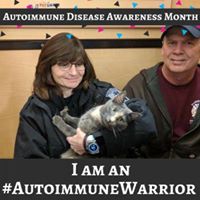-
Posts
452 -
Joined
-
Last visited
FL_Medic's Achievements
Newbie (1/14)
3
Reputation
-
Link to Lee County website Lee County EMS is now accepting applications to fill EMT positions. Experienced paramedics should still apply. Great pay and benefits with an aggressive EMS system in sunny SouthWest Florida. Do not pass up this opportunity! It closes on 10/04/10
-
Just for fun, here ya go. I know it doesn't answer your question, but the topic made me think of it, and I figured I would share below. To answer your question, "non-specific ST-T changes" is something commonly used by the non-EP physicians out there (which is most). It is similar to an EMT telling you they got 130/palp after listening for a BP.... It isn't actually what the patient has, but it isn't necessarily a lie either. Explain to me how you could ever have a "non-specific ST-T wave change"? The change is SPECIFIC, but the etiology may be unknown. ST-Elevation: E - Electrolytes (hyperkalemia) L - LBBB E - Early repolarization (high take off) V - Ventricular hypertrophy (LVH) A - Aneurysm T - Treatment (eg pericardiocentesis) I - Injury (AMI, contusion) O - Osborne waves (hypothermia) N - Non-occlusive vasospasm ST-Depression: D - Drooping valve (MVP) E - Enlargement of LV with strain P - Potassium loss (hypokalemia) R - Reciprocal ST- depression (in I/W AMI) E - Embolism in lungs (pulmonary embolism) S - Subendocardial ischemia S - Subendocardial infarct E - Encephalon hemorrhage (intracranial hemorrhage) D - Dilated cardiomyopathy Inverted T-waves: I - Ischemia N - Normality [esp. young, black] V - Ventricular hypertrophy E - Ectopic foci [eg calcified plaques] R - RBBB, LBBB T - Treatments [digoxin] Differential for Non-specific ST-T wave changes One more source from Google:
-
Where's the evidence that advocates spinal immobilization? There is no evidence that shows our methods of spinal immobilization does anything to protect even a known injury to the cervical spine. I hear what you're saying, and I have read it all too. However there is more evidence showing that you will further injure a patient using our traditional methods. Of coarse, I'm not ready to sit on the stand and defend that stance until my MD is ready to accept the data. Just thought I'd play devil's advocate.
-
On Paramedicine 101, THIS CASE is presented in full. C/C Syncope. No chest pain. ECG 1 ECG 2
-

Pediatric Cardiac...with obvious ST changes
FL_Medic replied to Riblett's topic in Education and Training
I meant for pediatric patients. If you read my blog you will see I a more than an advocate for 12-leads which are the standard of care. Pediatric patients exhibit 12-lead findings that even ER physicians don't understand. -

Pediatric Cardiac...with obvious ST changes
FL_Medic replied to Riblett's topic in Education and Training
12-lead ECGs are not recommended for paramedics to do... because we will see much more than there really is most of the time. Pericarditis is possible, is he sick, febrile, positional pain? Early repolarization is very likely in the young patients. They will almost always present with a degree of ST-elevation. Large QRS complexes in precordial leads indicate LVH in adults, but I think this may be benign in kids. The width of the QRS complexes is of concern. Usually depolarization is much faster the younger you are. -

Baby Paramedic with a question regarding pacing
FL_Medic replied to Hillbilly Medic's topic in Patient Care
Pacing is used to try to increase heart rate. Compressions provide a mechanical pulse. Without a mechanical pulse, the electrical heart rate provided by pacing is of little use. Think of reasons they are in arrest. Pacing does not ultimately cure any of them. When you are providing chest compressions, you are pumping the blood out of the heart because the heart isn't able to do it on it's own. The pacemaker internal or external, does not pump blood. It attempts to stimulate the heart's own electrical pathways in hopes of having a mechanical reaction. Thus, the heart of a patient in cardiac arrest has gone beyond the point of pacemaker usefulness. Pacing was part of the PEA/Asystole recommendations from AHA. I believe it was removed in '05. -

Trauma: Episode18 (Season Finale)
FL_Medic replied to Richard B the EMT's topic in General EMS Discussion
What professionalism when talking over the radio. -
Well the medic was right in the sense, that if you are looking to determine STEMI or not, position will have very little effect. However, it could shift the axis, only slightly. In the prehospital world, I would venture to state that Fowler's or supine are both appropriate for obtaining a 12-lead ECG. There are many other factors, that skew 12-leads, that should be of more concern.
-
I'm actually glad he used that blog post as a reference. Probably because I am favoring my own work a bit. If you read the post, I provided multiple research references. The post was more towards King LT vs. intubation for cardiac arrest. With the emphasis on continuous chest compressions, I have found that the King LT is superior [to intubation]. On the flip-side, outside of cardiac arrest, endotracheal intubation is by far a better means of controlling the airway. I wrote that particular post about a year ago, and I am sure there has been much more research provided since. A query on Pubmed may be in order. Also, I do disclaim that it is just a blog, and as I do try to only advocate evidence-based medicine, my opinion is riddled throughout.
-
Our system is having great results using the ResQPod, as well as Collier Co. EMS.
-
The patient was a BLS head LAC. Only flying due to difficult egress from the island.
-
Below is the drug math tutorial from Paramedicine 101. (Click to view this embedded page in a new window) (Click to view this embedded page in a new window) (Click to view this embedded page in a new window) (Click to view this embedded page in a new window)
-
Just wanted to stop you before you made a big mistake. Hey, it wasn't until at least my second year on the road when I learned how dangerous WPW can be. Big ups on your early motivation. Tom won't plug his own page, but I recommend you head over to his blog. Be forewarned, you might be wondering where 4 hours went, after you get done reading. Its addictive, well at least for EMS dorks like me it is.



